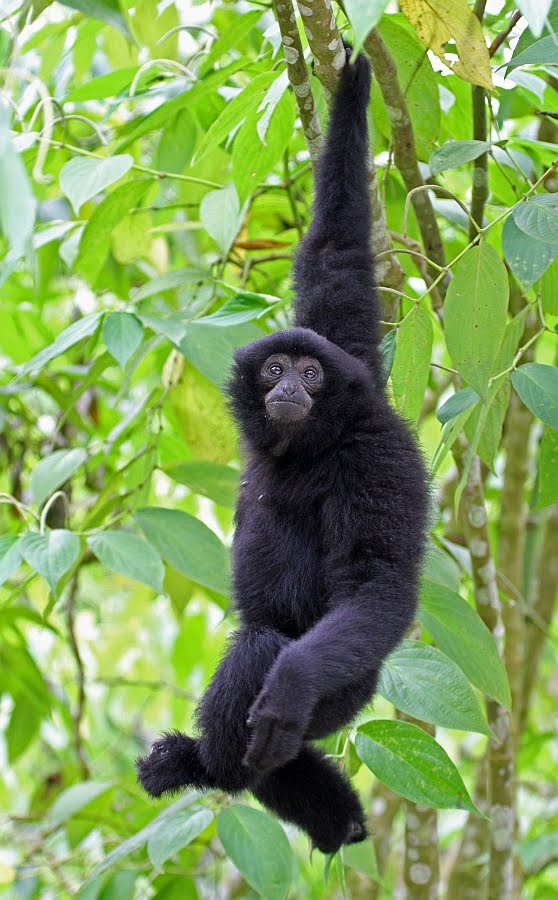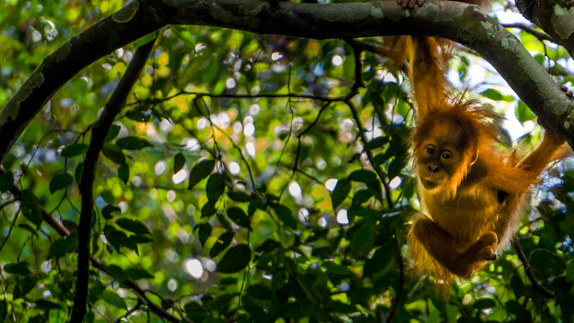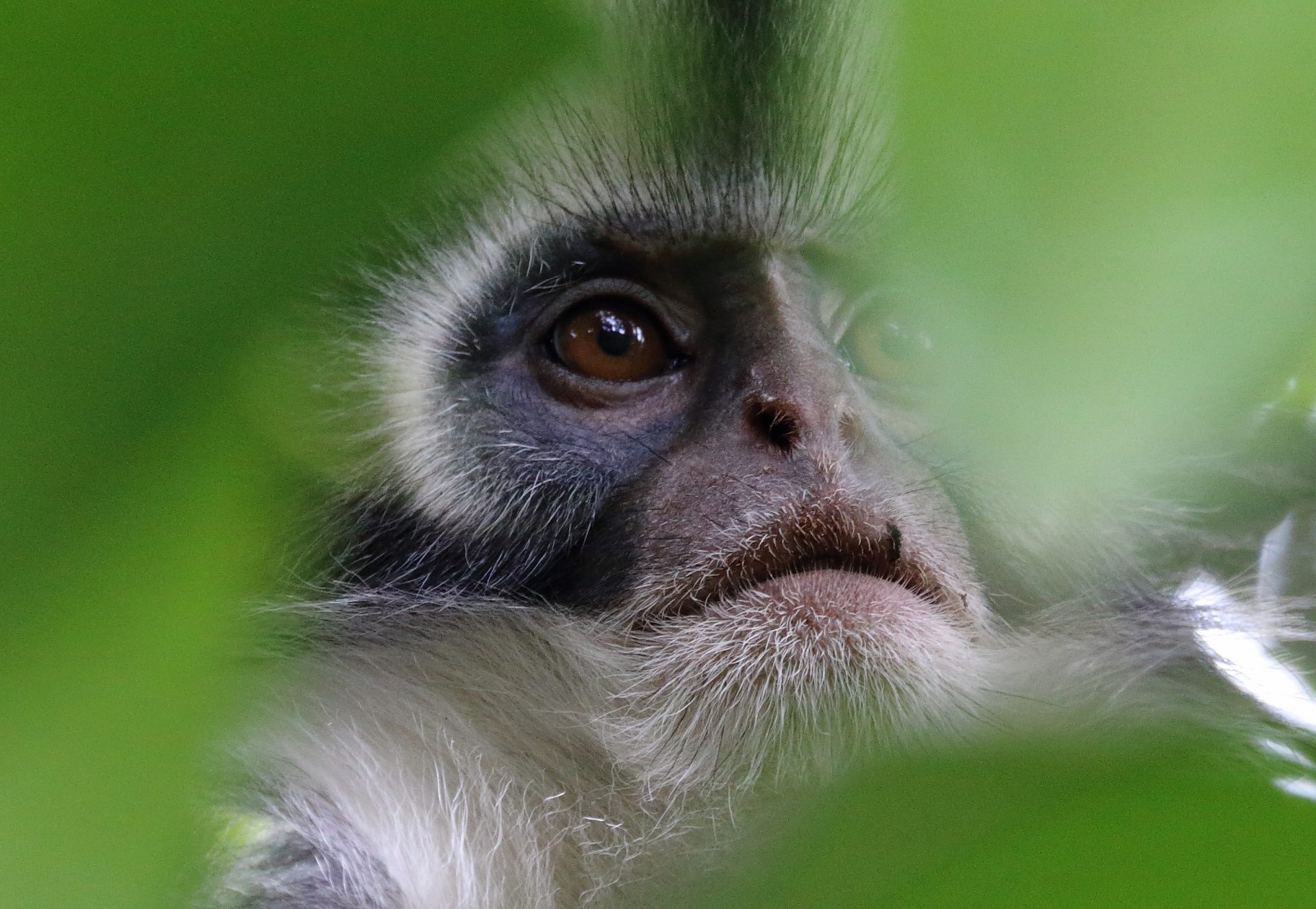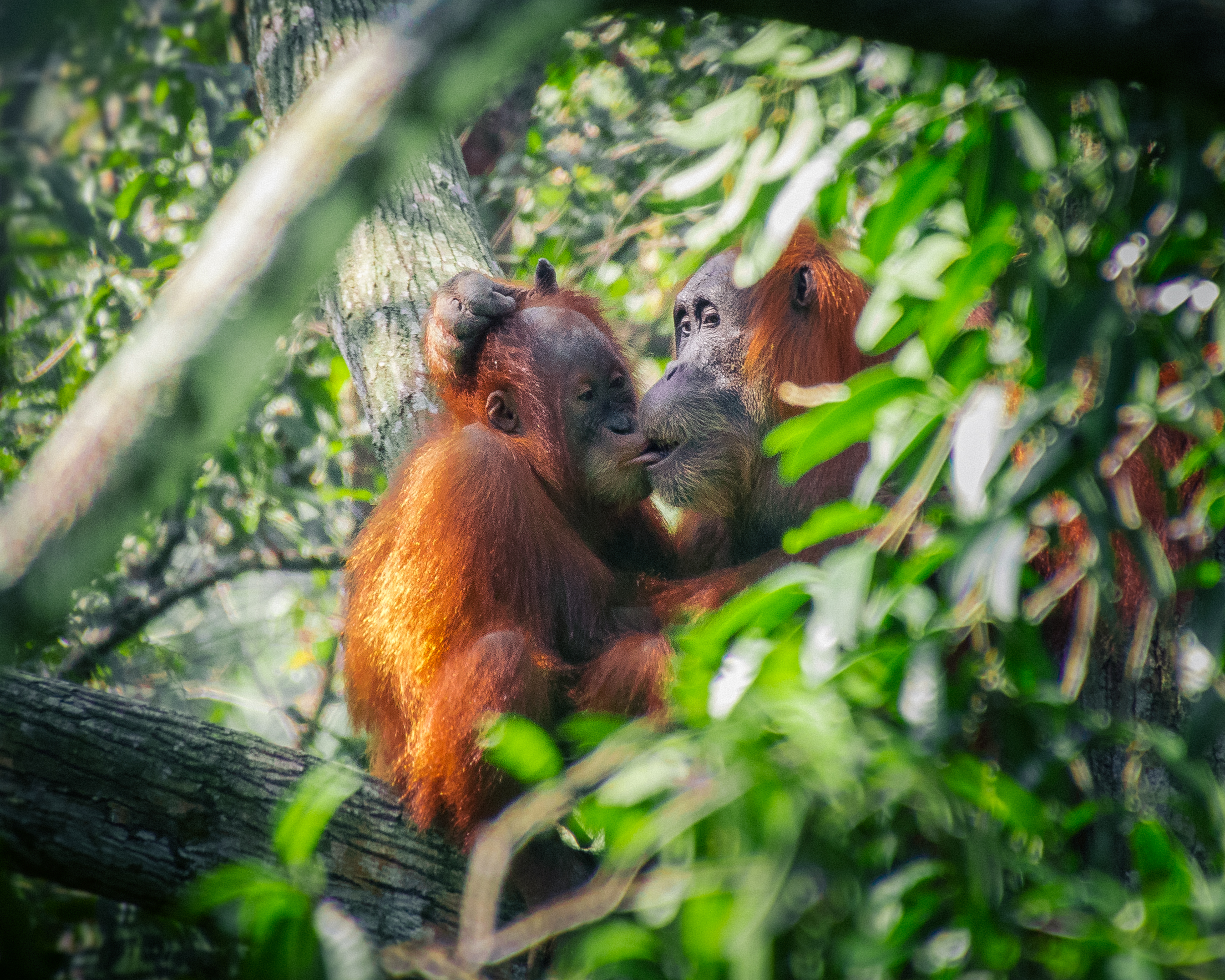Siamang (Sympalangus syndactylus)
Siamang, also known as the greater gibbon, is an acrobatic primate, and is the darkest and largest of the gibbons.
They have unusually large hands that are larger than their feet, and take ‘just another lazy day’ to the next level.
Siamangs possess a gular (throat) sac with the size of a grapefruit, making them the noisiest of all gibbons.
Description
In this age of quick marriages and quicker divorces, monogamy in non-human primates is a refreshing concept. Meet siamang, the “faithful” gibbon! The breeding pairs take their vows of “till death do us part” very seriously, and remain together for life. Sounds “oh-so-romantic”, right? Not to burst anyone’s bubble, but some males may develop polygamous relationships with other female siamangs. Siamang, the acrobatic primate, is the darkest, largest, and noisiest of the gibbons. Also known as the Greater Gibbon, siamangs are fascinating creatures. They are lightweight and small with a height of around 73.7 cm – 88.9 cm. They may reach more than 1m while standing. The males weigh around 11.9 kg and females around 10.7 kg. There is some sexual dimorphism observed in siamangs. Male siamangs are slightly bigger than their female counterparts. Males also have a thick tuft of hair around their genital area. Like human beings, siamangs have strong senses including sight, hearing, taste, touch and smell. They also have a highly developed brains that are typical of primates. Siamangs may live up to the age of 35 years in wild and around 40 years in captivity. Siamangs have two subspecies: Malaysian siamangs (Symphalangus syndactylus continentis) and Sumatran siamangs (Symphalangus syndactylus syndactylus) based on their respective habitats. They are closely related to gibbons, and share similar characteristics with a few differences. Siamangs are bigger and louder than gibbons. The exceedingly large throat sac under the chin in siamangs also makes them look slightly different from gibbons.
Anatomy and Characteristics
The scientific name of siamangs, Symphalangus, originates from the Greek words “sum” and “phalanx” that mean together and finger respectively. The second and third toes of siamangs are joined by skin. These “webbed” toes are one of the main features to identify siamangs.
Male and female siamangs have a shaggy, long black coat all over their body except the face, palms, soles of the feet, and fingers. Both the sexes have opposable big toes and long canine teeth. Their large (almost like a grapefruit) pink or gray gular (throat) sac acts as a resonance body responsible for producing two notes: a deep note and a loud one. Their cry is a distinctive characteristic, making them the noisiest gibbons.
These tail-less primates have small nostrils and dark eyes. Siamangs have hands similar to human beings. Their hands have four elongated fingers and a small opposable thumb. Likewise, their feet have four toes and an opposable big toe. They grasp and carry things using both hands and feet. The fingers of the hands are also used as a hook for brachiating (swinging through the trees). Their very long arms facilitate them to move quickly through trees.
Habitat
Siamangs are typically found in the tropical rainforests of Sumatra (Indonesia) and Malaysia. They can also be found in some parts of Peninsular Thailand. In particular, the Barisan Mountains and the west-central part of the Sumatra island are the homes of siamangs. In Malaysia, they are found in the southern part of the Perak River.
They prefer altitudes of 700-900 m and are arboreal, living in the upper canopy (tree tops) between 20-40 m. The siamangs are extremely acrobatic and move through the branches using hand-over-hand swinging. This movement is called brachiating. When they move slowly, they hang themselves from a branch before they grab the next branch. Also, siamangs are swinging in the air like a pendulum, swinging up to 50 feet in a single leap.
Siamangs typically do not enter the ground. If they do, they are bipedal (walking on two legs). They stay away from water as they cannot swim.
Diet and Predators
The siamangs diet consists of a variety of foods, and half of their daily activity is spent to foraging and eating. Siamangs primarily eat fruits and leaves, figs being their favorite. While being suspended from the branches, they pick the ripe fruits and avoid the unripe ones. They typically eat fruits during the early part of the day as fruits provide them with more energy. As the day progresses, siamangs eat leaves that can be found easily on tree tops. They tend to eat the young leaves and just a few mature leaves. Siamangs eat over 160 varieties of plants. As an omnivore, they also eat insects, small vertebrates, and eggs of birds.
Siamangs are extremely agile animals and move quickly. Most part of the day, they live on tree tops. So, it is difficult for the predators to catch them. However, sometimes they may run out of luck, and become prey to large cats such as clouded leopards, big snakes such as pythons, and eagles.





